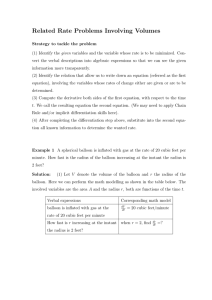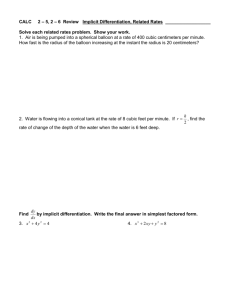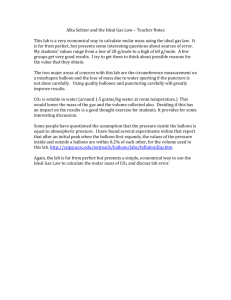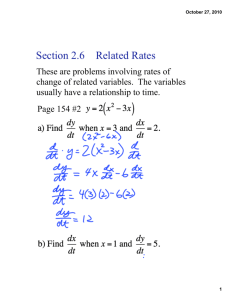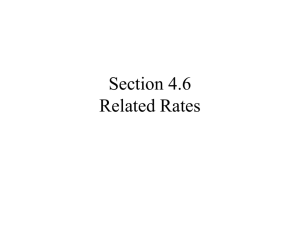Some Related Rate Problems From Old Exams
advertisement
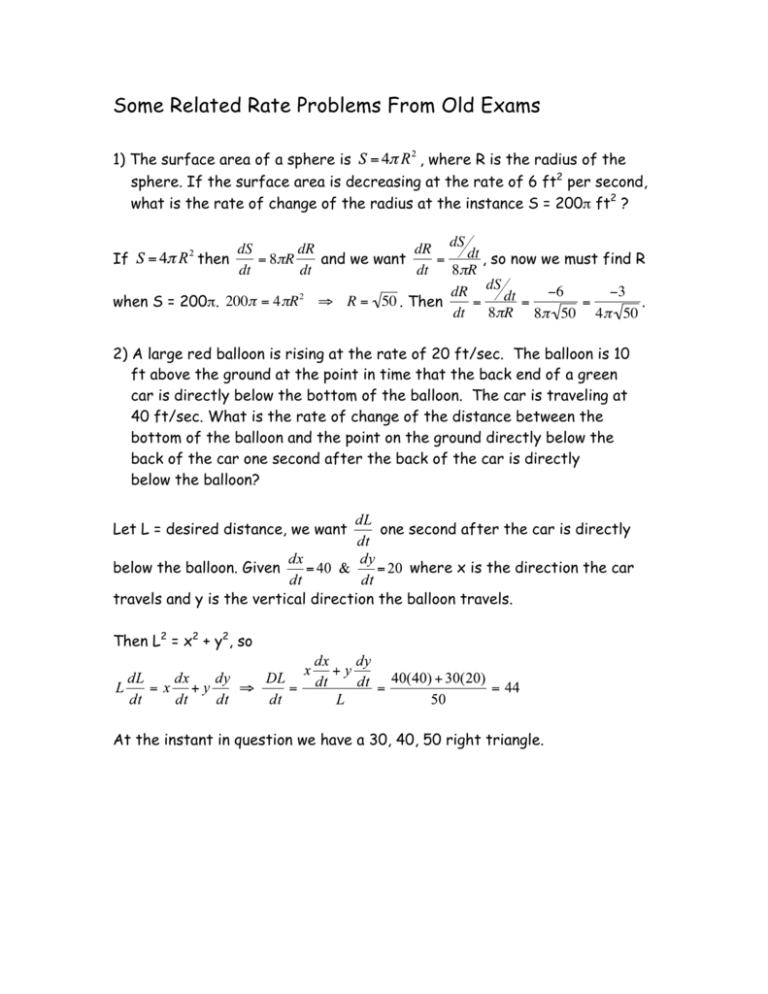
Some Related Rate Problems From Old Exams 1) The surface area of a sphere is , where R is the radius of the sphere. If the surface area is decreasing at the rate of 6 ft2 per second, what is the rate of change of the radius at the instance S = 200π ft2 ? dS dR dR dS dt and we want , so now we must find R = 8πR = dt dt dt 8πR dR dS dt −6 −3 2 when S = 200π. 200π = 4 πR ⇒ R = 50 . Then = = = . dt 8πR 8π 50 4 π 50 € € 2) A large red balloon is rising at the rate of 20 ft/sec. The balloon is 10 € ft above the ground at the point in time € that the back end of a green car is directly below the bottom of the balloon. The car is traveling at 40 ft/sec. What is the rate of change of the distance between the bottom of the balloon and the point on the ground directly below the back of the car one second after the back of the car is directly below the balloon? If then Let L = desired distance, we want below the balloon. Given one second after the car is directly where x is the direction the car travels and y is the vertical direction the balloon travels. Then L2 = x2 + y2, so At the instant in question we have a 30, 40, 50 right triangle. 3) A particle moves along the curve defined by . Determine the value(s) of x at which the rate of change of its y-coordinate is equal that of its x-coordinate. So 1 = x2 − 3 € dy dx dy dx , now let giving = ( x 2 − 3) = dt dt dt dt ⇒ x = ±2 . then € is revolving at the rate of 10 radians 4) A Ferris € wheel with radius 25 feet per minute. How fast is a passenger rising when the passenger is 15 feet higher than the center of the Ferris wheel and is rising? y Want 25 Given: y at the instant y = 15. , and radius is 25. θ x We have sin θ = Then At the instant y = 15, we have 25 15 20 cos θ = , so then . , so y = 25sin θ.
